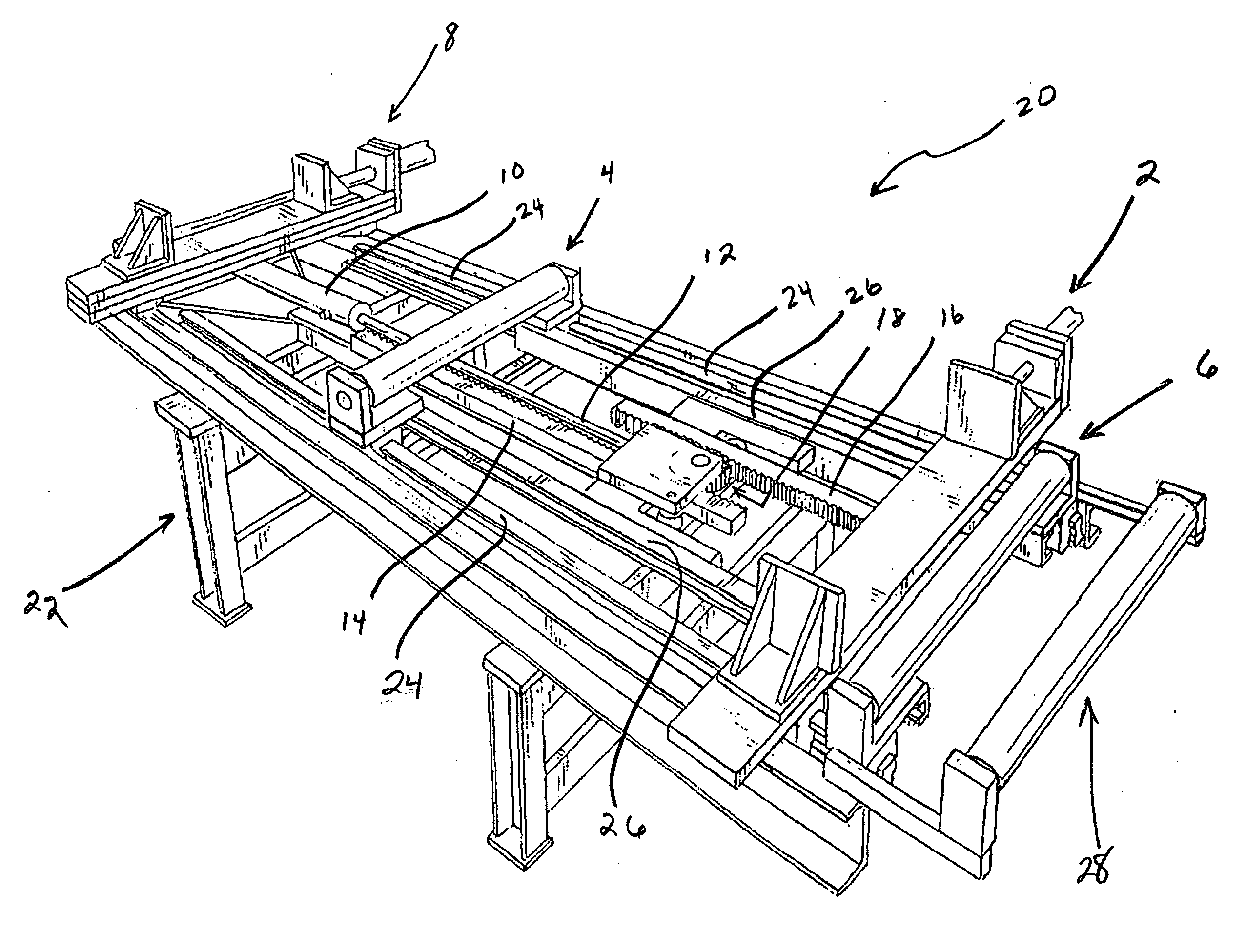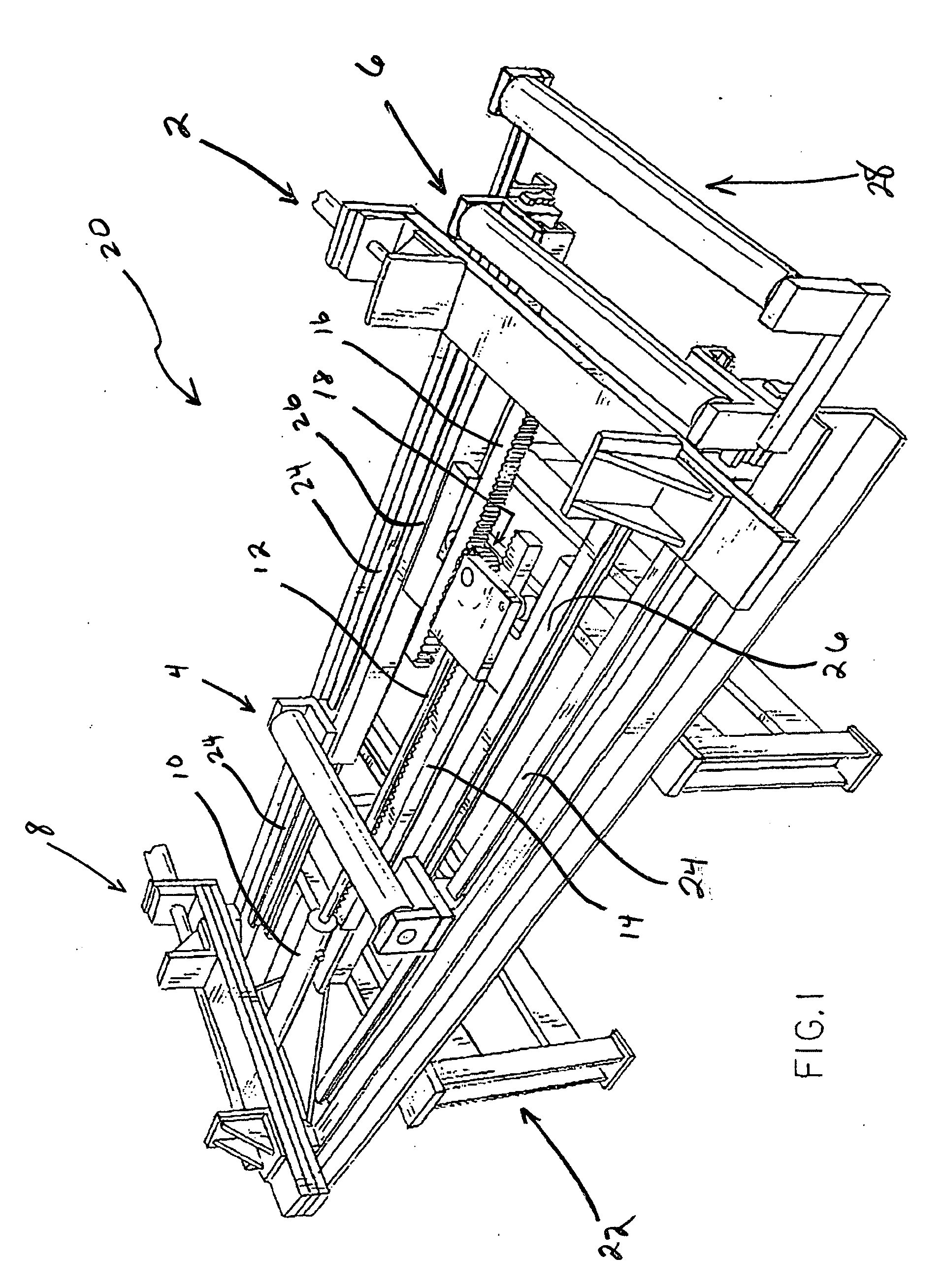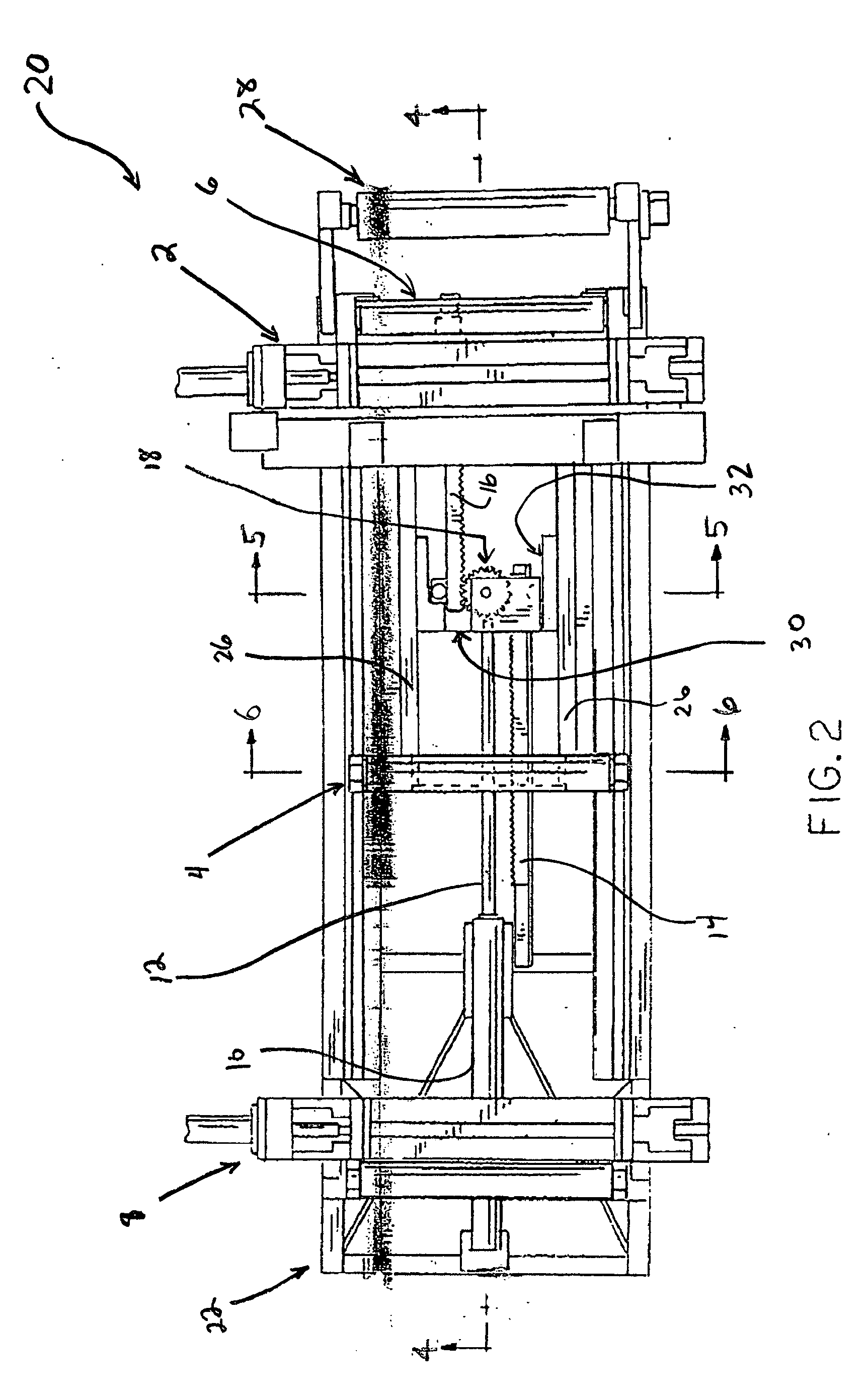Vise carriage and support mechanism
a support mechanism and vise carriage technology, applied in the field of material feed systems, can solve the problems of limiting the movement range of the vise carriage to less than half the length of the table, the problem of affecting the stability of the vise carriage, and the difficulty of adjusting the suppor
- Summary
- Abstract
- Description
- Claims
- Application Information
AI Technical Summary
Benefits of technology
Problems solved by technology
Method used
Image
Examples
Embodiment Construction
[0021] Referring first to FIG. 1, a perspective view of a preferred embodiment of a roller table 20, according to the present inventions described herein, is shown. Roller tables 20 are generally used in conjunction with cutting machines to feed, support and position material, although the present invention can be used in other applications which require a material feed system. The preferred embodiment of the roller table 20 includes a movable vise carriage 2 and a pair of movable roller supports 4 and 6, all of which are disposed on a pair of rails 24. The pair of rails 24 are fixed to the frame 22 of the roller table 20, and run along the length of the roller table 20 to define the range of movement for the vise carriage 2 and the movable roller supports 4 and 6. The first movable roller support 4 is preferably located approximately at the midpoint of the span between the movable vise carriage 2 and a stationary vise 8, which is fixed to the frame 22 of the roller table 20. The se...
PUM
| Property | Measurement | Unit |
|---|---|---|
| Length | aaaaa | aaaaa |
| Ratio | aaaaa | aaaaa |
| Distance | aaaaa | aaaaa |
Abstract
Description
Claims
Application Information
 Login to View More
Login to View More - R&D
- Intellectual Property
- Life Sciences
- Materials
- Tech Scout
- Unparalleled Data Quality
- Higher Quality Content
- 60% Fewer Hallucinations
Browse by: Latest US Patents, China's latest patents, Technical Efficacy Thesaurus, Application Domain, Technology Topic, Popular Technical Reports.
© 2025 PatSnap. All rights reserved.Legal|Privacy policy|Modern Slavery Act Transparency Statement|Sitemap|About US| Contact US: help@patsnap.com



